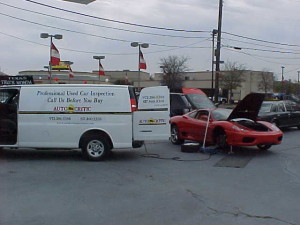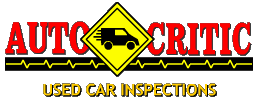Skip to content
Skip to main menu
What The Auto Critic Does
- inspects for damaged/repaired body, frame and unibody (involves lifting the vehicle)
- pressure tests coolant system: radiator, radiator hoses, water pump, heater core, heater hoses and head gasket/s for leaks, ratio

- tests charging system (alternator & battery) to deterioration, and for adequate antifreeze insure adequate current supply
- assesses A C compressor/system for proper operation, odd noises, and visible leaks
- checks engine seals and gaskets for leaks
- assesses engine for proper performance (test drive, OBD scan, see #12)
- examines brake system for wear and damage: wheels are removed on one side of vehicle for this inspection; follow up is provided on the opposite side if required or if accident damage is observed on that side
- verifies dash gauges and warning lights post at ignition “on”
- checks exhaust system for leaks, damage, and rust out
- checks suspension components (shocks, struts, springs, and sway bars)
- checks steering components (steering gear, rack & pinion, idler arm, tie rod ends, etc.) for wear
- Diagnostic scan utilizing factory software coding (not $50 generic OBDII code readers) which reads all modules in today’s high-tech automobiles. Generic OBDII scanners are useful to see if a vehicle will pass state inspection, very little beyond.
- removal of timing belt cover, where possible, to inspect condition of belt when close to anum or mileage due-points



